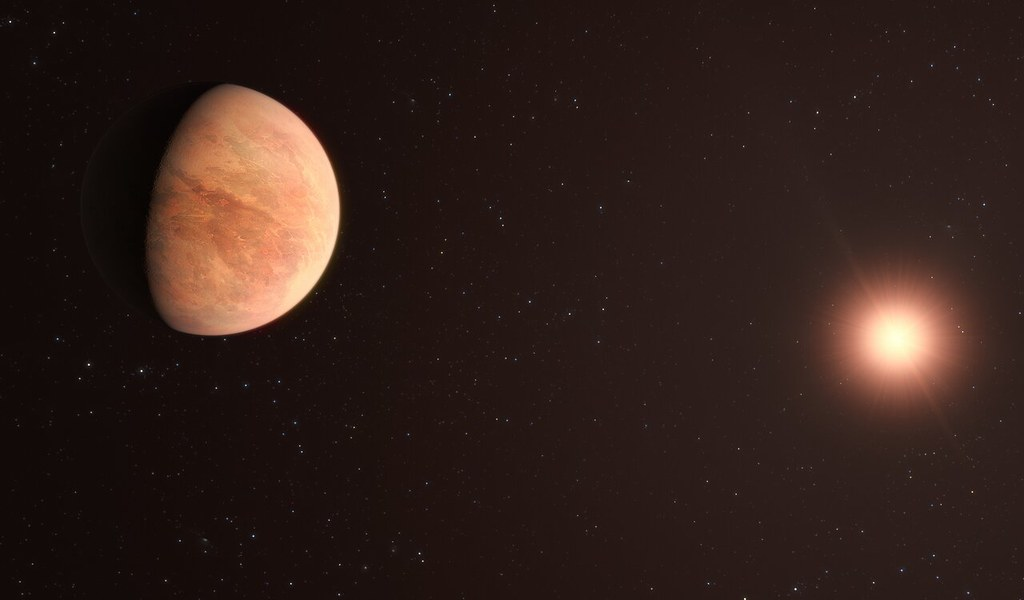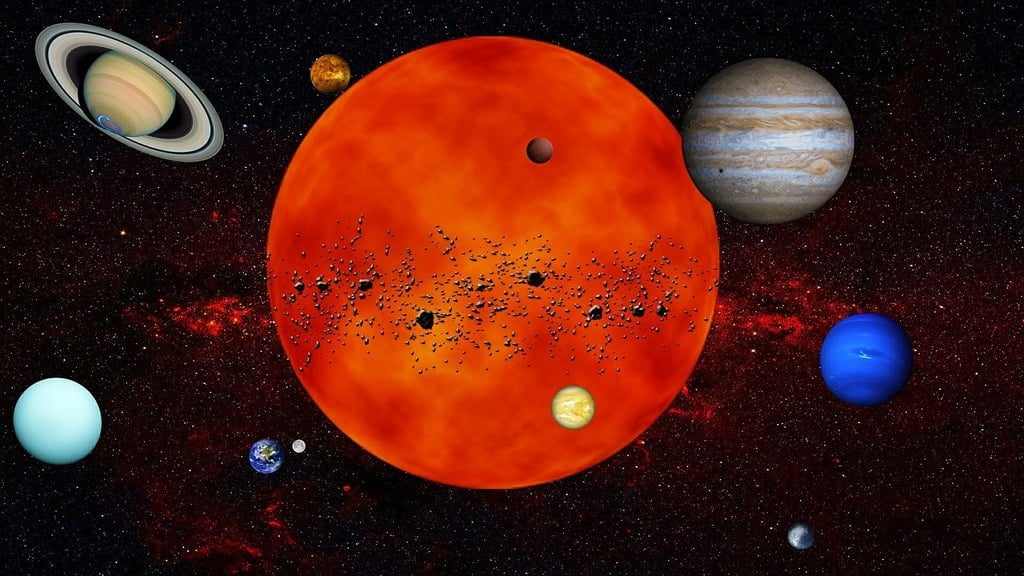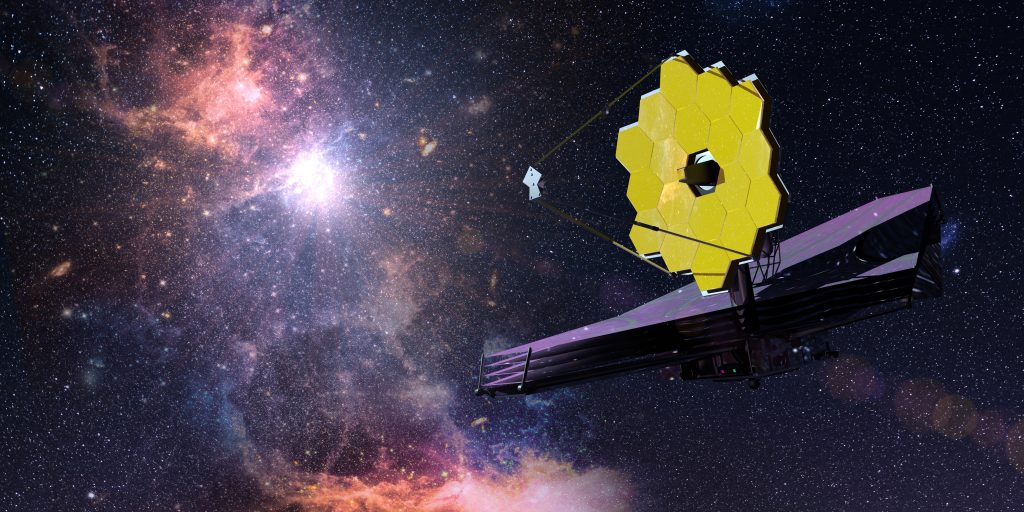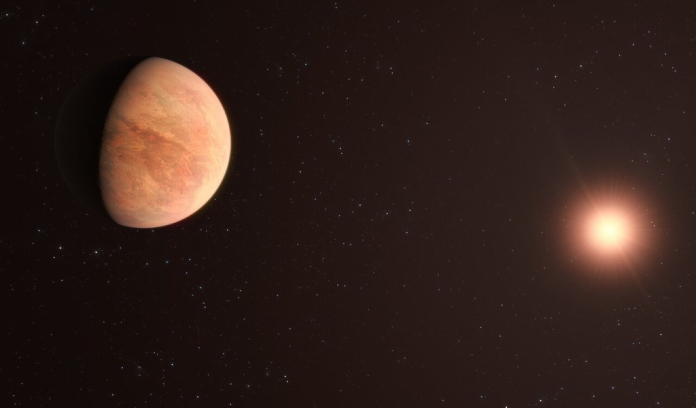
If you’d like to label your family complicated, just take a glance at L 98-59, a red dwarf star just 35 light-years from our planet, recently discovered to have not four but five quite distinct planets. The newest addition, L 98-59 f, was lurking there all this time, just waiting to be uncovered by some archival detective work and advanced methods that are revolutionizing the way astronomers hunt for worlds beyond our solar system.

1. A New World Emerges from the Data
L 98-59 f was not revealed by a new telescope pointed towards the heavens, but by painstaking re-sifting of data already obtained by NASA’s TESS and JWST along with ground-based HARPS and ESPRESSO spectrographs. The research team led by the Trottier Institute for Research on Exoplanets utilized an improved line-by-line (LBL) radial velocity technique, first introduced in 2022, to filter through the stellar noise that had previously hidden the planet’s weak gravitational pull. As Étienne Artigau said, “We developed these techniques to unlock this kind of hidden potential in archival data.” It also demonstrates how upgraded analysis tools allow us to solidify previous discoveries with data that are simply waiting to be re-studied. These new discoveries give the most complete picture yet of the fascinating L 98-59 system.

2. The Power of Advanced Radial Velocity Techniques
The LBL technique is a leap forward in exoplanet detection. Standard radial velocity methods convolve the Doppler shifts across all stellar lines, but the LBL method looks at each line individually and allows for the detection and removal of activity-induced signals stellar “noise” which can masquerade or conceal planetary signals. This is particularly relevant to M-dwarf stars like L 98-59, whose magnetic activity and flares can produce spurious signals. By pairing LBL with a new differential temperature indicator, the team doubled the previous accuracy in measuring radii and planetary masses by pairing these enhanced measurements with transit analysis seen by JWST.

3. L 98-59 f: An Earth-Sized Planet in the Habitable Zone
L 98-59 f is not only impressive as the fifth planet of the system, but as its most intriguing. Orbiting every 23 days, it is getting approximately the same level of stellar energy as Earth, placing it squarely in the star’s habitable zone where liquid water could be found under the proper atmospheric conditions. Charles Cadieux stated, “Finding a temperate planet in such a dense system makes this discovery so exciting.” It emphasizes the enormous variation in exoplanetary systems and increases the argument for the study of potentially habitable planets around low-mass stars even further. L 98-59 f captures about the same level of stellar radiation as Earth gets from the Sun, and its minimum mass is 2.8 Earth masses.

4. An Extreme System
The L 98-59 system is a planetary diversity laboratory in nature. The two inner planets, b and c, are terrestrial and possibly volcanically active, with tidal warming in the manner of Jupiter’s moon Io. L 98-59 b, for instance, is only 84% the size of Earth and about half as massive one of the few sub-Earths so well-measured. The third planet, d, is low-density and may be a water world, with up to 16% water by mass just the opposite of any known planet in our solar system. A separation of the internal composition of the transiting planets indicates increasing water-mass fractions with stellar distance.

5. Instrumentation: HARPS, ESPRESSO, and the JWST Edge
The success of the discovery relies on the concordance between ground- and space-based instruments. HARPS’s stabilized, high-resolution spectrograph has been at the forefront of radial velocity accuracy for a long time, now complemented by new wavelength calibration techniques eliminating CCD stitching anomalies and systematic errors this improved calibration of HARPS’ spectrograph makes it possible to delve deeper into the search for low-amplitude radial-velocity signals. ESPRESSO, installed on the VLT, is even more accurate virtually approaching the holy grail of 10 cm/s and will enable the detection of Earth-mass planets within the habitable zones of M dwarfs. JWST, however, provides transmission spectroscopy of a previously unattainable sensitivity, required to probe the atmospheres of these small, temperate exoplanets.

6. Atmospheric Prospects and Transmission Spectroscopy
The atmospheric characterization of the L 98-59 planets is already underway. JWST’s NIRSpec and NIRISS instruments will be targeting these worlds for multi-transit transmission spectroscopy in the hopes of detection of molecular traces of water vapor, carbon dioxide, or even sulfur dioxide hopes for the detection of volcanic activity or secondary atmospheres. Initial results indicate a SO₂-rich atmosphere on L 98-59 b as indicating ongoing volcanic activity, while the spectrum of L 98-59 d may reveal photochemical or water-based atmospheric chemistry. The flat transmission spectra observed for the inner worlds with HST and JWST rule out cloud-free hydrogen-rich atmospheres, and instead favor heavier, potentially secondary atmospheres HST has ruled out cloud-free hydrogen-rich atmospheres on planets b, c, or d.

7. Implications for Planet Formation and Evolution
The tight, coplanar L 98-59 system provides a glimpse into planetary formation around low-mass stars. These increasing water content with orbital distance, sub-Earths and super-Earths occurrence, and tidal heating signatures all direct models of disk chemistry, migration, and retention in the atmosphere.

As René Doyon described it, With its diversity of rocky worlds and variety of planetary compositions, L 98-59 offers a unique laboratory to address some of the most basic questions of the field: What are super-Earths and sub-Neptunes made of? Do planets around small stars move differently? Can rocky planets around red dwarfs sustain atmospheres in the long term?

The L 98-59 system, now with five known planets, is a cornerstone in attempting to understand planetary diversity and habitability. As Alexandrine L’Heureux said, “With these new discoveries, L 98-59 is now part of the elite club of close, small planetary systems that we eagerly anticipate learning more about in the next few years.” It’s exhilarating to have it alongside planets like TRAPPIST-1 in our quest to unlock the nature and origin of red dwarf small planets.


